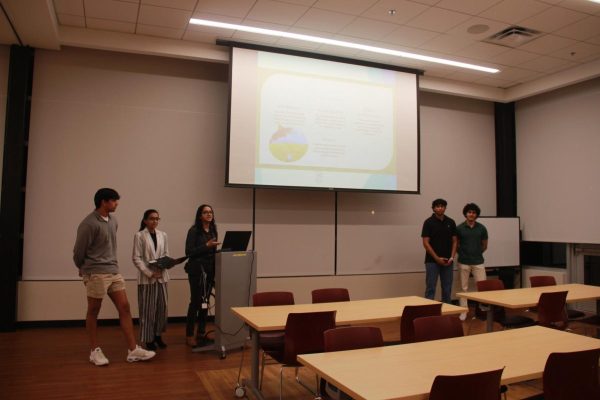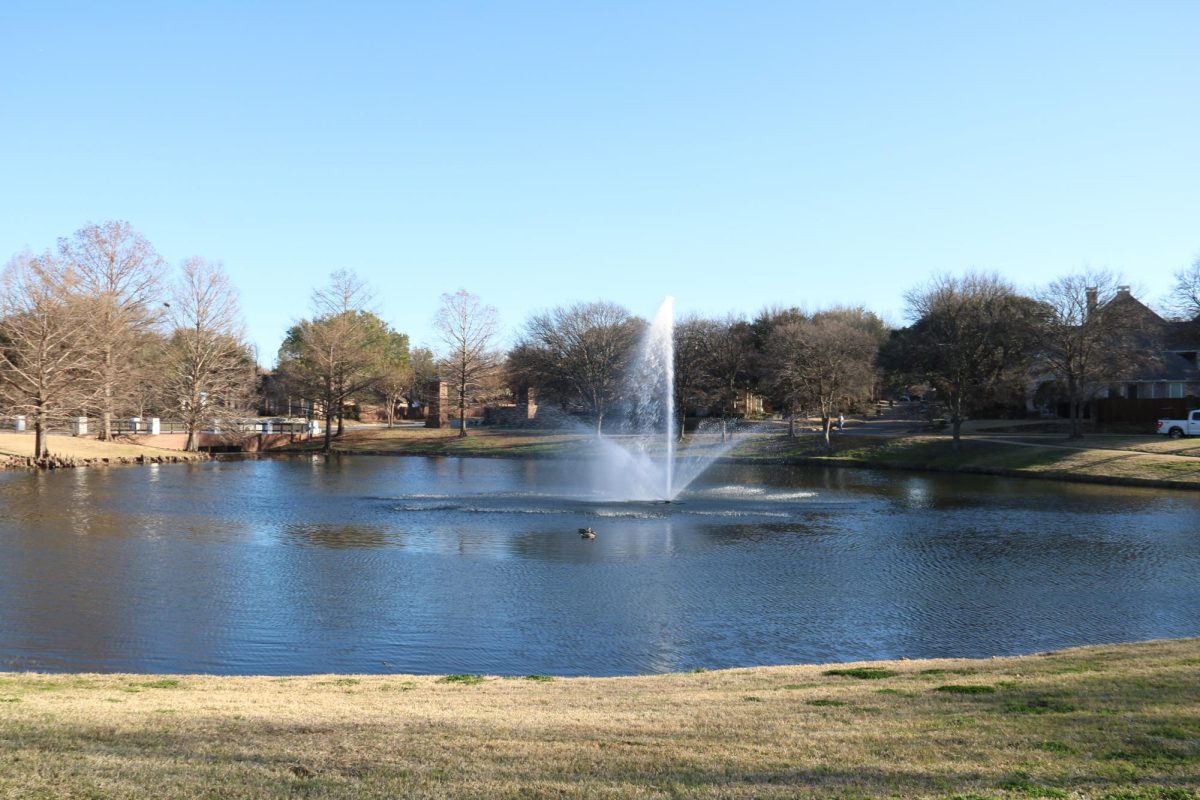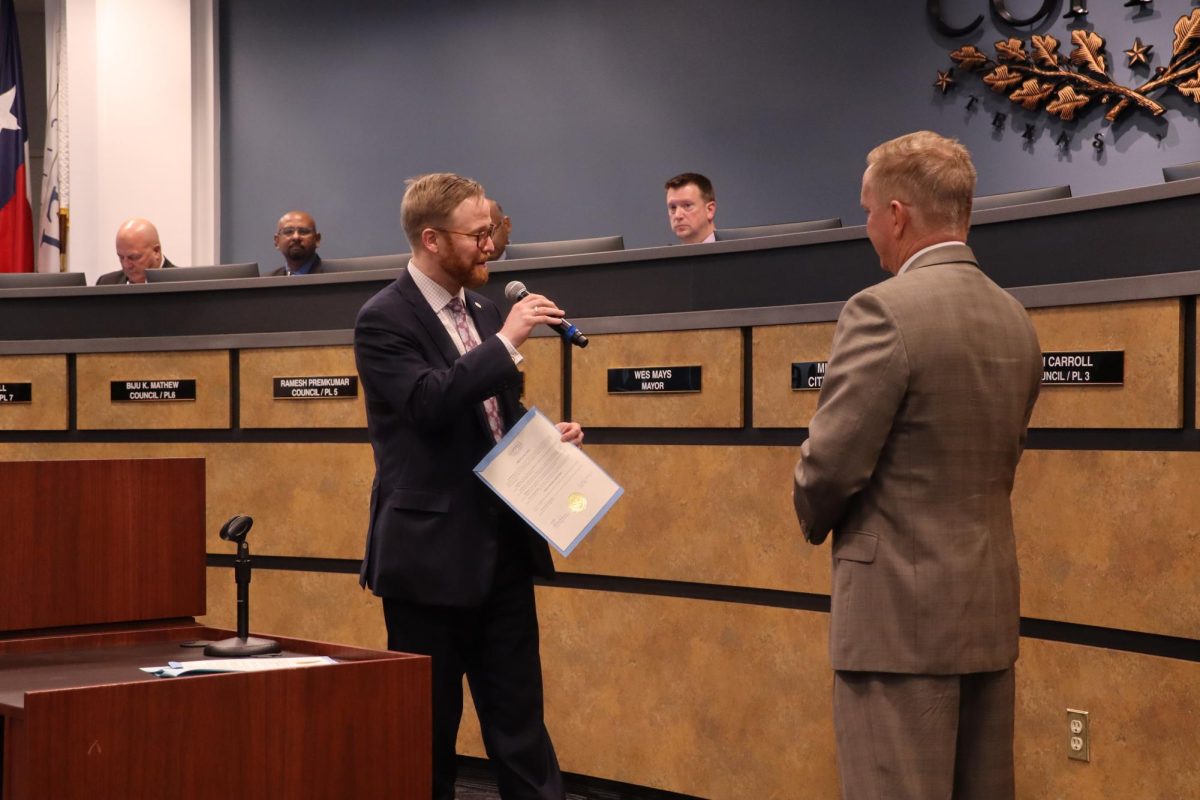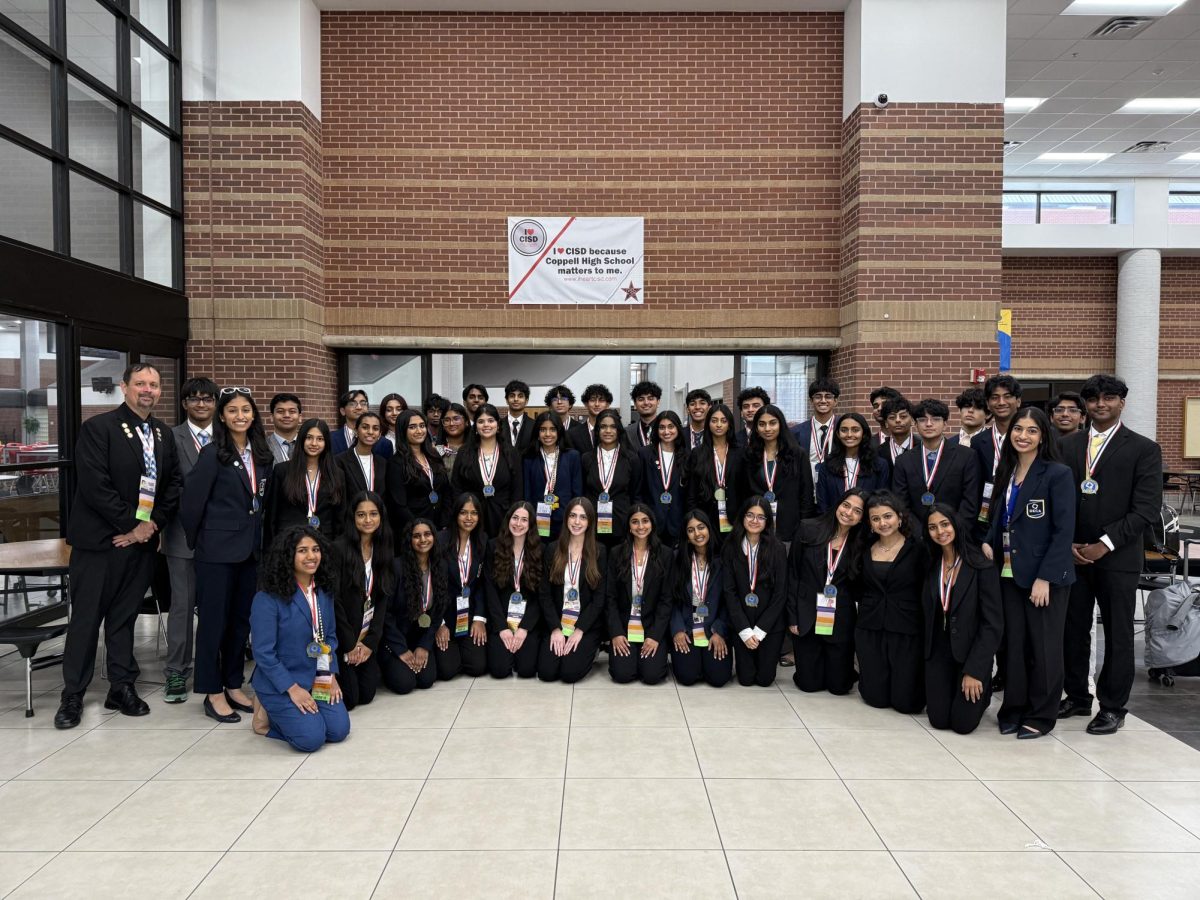Ten years ago, science teacher Holly Anderson started a project with the Coppell High School IB Environmental Science class and the IB Aquatic Science class to examine natural algae and evaluate the water quality in local ponds around Coppell. She originally had the classes look at Gifford Pond, and then a couple years later, Martel Pond.
But when Martel Pond had no water this year, she took the project to the pond outside Town Center.
When the classes went to the pond, they discovered a great deal of litter and plastic particles floating in the water. The pond was leaning more towards a basic pH level, which, left untreated, could bring harm to people and animals near the lake.
They tested the water for nitrogen, phosphorus and brought back microinvertebrates to test the quality of the water.
With their findings, the classes organized into four separate groups. One group was tasked with contacting the Chaucer Estates Homeowners Association (HOA), who is responsible for maintaining the pond. Another group was tasked with speaking to Pinkerton Elementary School students about what they can do to help the local environment. Another group was assigned to communicate with the Coppell ISD Board of Trustees and the last group was tasked with contacting the Coppell City Council.
The goal of these groups is to work with the community to solve this problem.
“What we did was we all collaborated on ‘What kinds of things do we think we could do with the community?’ and ‘What were the most important things we learned and how can we make use of the data?” Anderson said.
Seniors Lakshmi Gorthi and Pari Sharma led the group responsible for communicating with the HOA. As the group researched, they found that runoff from sewage systems in the neighborhood is a significant contributing factor in polluting the pond.
“I started going to sewage systems and this is where I discovered that property owners have their own sections of the sewage systems, and if they don’t maintain it or don’t properly take care of it, that can lead to runoff into any nearby water sources,” Gorthi said. “I thought that that was really interesting, and that’s something I could discuss with the HOA or at least explore a little more with the HOA on what exactly we can do to have property owners be more involved when it comes to maintaining the pond.”

To reduce sewage runoff, the group has been encouraging homeowners to call maintenance companies to ensure that sewage systems are routinely cleaned. Less pollution in the water allows the ecosystem of the pond to thrive, maintaining biodiversity in the area.
“Biodiversity essentially helps with the circulation of nutrients,” Gorthi said. “Whether it comes from the smallest of organisms like plankton, to the largest of animals like fish, these all help with maintaining the nutrients as well as regulating the dissolved oxygen.”
With biodiversity in mind, the group proposed an event named Babies and Butterflies.
“There aren’t a lot of native bushes in Texas, which doesn’t give a lot of space for bugs like butterflies to actually breed and live around the pond,” Sharma said. “For Babies and Butterflies, if the HOA were to introduce these bushes that harbor butterflies, they will be able to increase how many insects are really living around the pond.”
The group is proposing to the HOA to get a grant from a program called Bring Back the Monarchs to Texas to designate the pond as a butterfly waystation. They want to make the Babies and Butterflies event a day similar to Arbor Day, where kids have the ability to connect to nature by planting a native plant that increases oxygen supplies to the pond.
“We want to establish a day during the spring where people gather around and bring food and have a good time, but also have this core memory where their children can plant native plants around the pond,” Gorthi said. “Having this program would just add on to those memories and connect to the importance of environmental awareness.”
The classes have also collaborated with Pinkerton Elementary School to teach younger students about the importance of water quality for Earth Day.
“We’re partnering with them to bring some of that education piece to them,” Anderson said. “The librarian there, Meghan Hunt, usually plans the Earth Week and so I had the students reach out to her about maybe our students could go there and do one of the events.”
Environmentalism has always been a big part of junior Ashia Agarwal’s life. Through this project, she has learned about the impact that advocacy has on creating change in the community.
“Other than just the environmental side of what I’ve learned, I think it’s just about advocacy and the fact that a lot of times as students, we can reach out to people and we can make a difference by doing that,” Agarwal said. “If we can make changes of how the pond is treated and follow up with it next year, and go and test the water after some implementation happens and see how the water quality changed, that would be amazing.”
Anderson is passionate about using these classes to teach students to become mindful leaders in the way they think about the environment.
“It’s not just the environment itself, but also talking about the social science piece of it and how politics and economics play into the decisions we make about the environment,” Anderson said. “I think my whole purpose for this course is to help students realize that they can make a change in the world and it’s not just someone else’s job.”
Follow @LizzieDeSanti_ and @CHSCampusNews on X.










